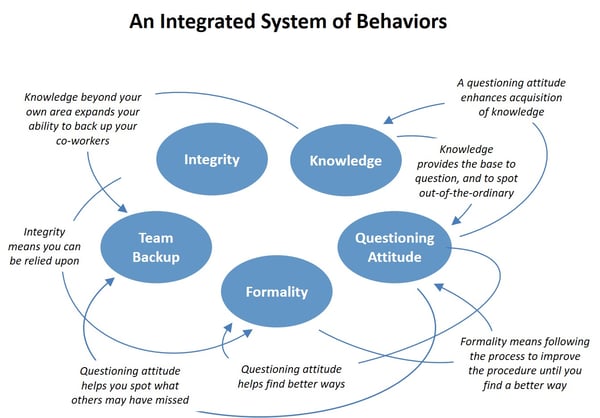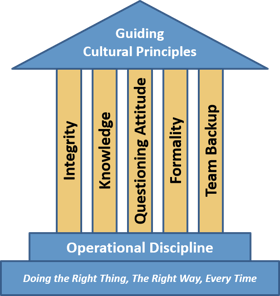The company found themselves frantically working to develop new procedures and systems to deal with unfamiliar conditions. Realizing efforts were not proving sustainable, leadership acknowledged more than some new procedures were necessary to ensure improved safety and the continued success of the company—having procedures in place and trusting good people to do good things alone was not sufficient. The company decided the best way to improve safety across all 5 of their U.S. refineries was to create a High-Reliability Organization (HRO) and the underlying culture necessary to support it, but without the right experience, they didn’t know where to begin.
WP&C applied the proven LEADS (Learn, Establish, Align, Develop & Sustain) four-step process for driving cultural transformation:
Learn: Before developing a plan for cultural transformation, the company needed to determine where it stood today. In addition to interviews at all levels, WP&C leveraged yardstyck®, a web-based assessment tool that allows companies to efficiently assess their culture against the characteristics of an HRO and empowers leadership to make the necessary changes.
Establish: Empowered with information from yardstyck®, WP&C worked with senior management to develop the guiding cultural principles that would support becoming an HRO. With WP&C’s experience and an understanding of the company’s unique needs, senior management aligned on 5 defining values, or cultural pillars, to begin embedding into the company’s way of working. Expressed together, these values would more assure that employees Do the Right Thing, The Right Way, Every Time – collectively referred to as Operational Discipline.
Align: WP&C prepared the organization for change by conducting role-specific training to help employees internalize the new cultural principles. Leveraging WP&C’s VITAL (Values Internalization Translation Awareness & Learning) process, company leaders guided employees through the development of Role Description Sheets which translated the principles to their specific positions within the company – creating a strong alignment between leaders and employees.
Develop & Sustain: The final step was to integrate the behavioral expectations into the Operational Excellence Management System (OEMS) – the structure by which the company would ensure sustainability of its management system processes moving forward.
Following the introduction and implementation of the new culture, WP&C provided several recommendations, not only to sustain gains but to further advance the new culture throughout the organization. Recommendations included:
- Workshops to ensure the new culture would be integrated into hazard training and recognition—a key component of being an HRO is consistently avoiding catastrophic incidents in environments where they are commonly expected due to the complex nature of the environment
- Introducing the newly developed cultural pillars to other BUs
- Continued development of Role Description Sheets and coaching of employees to move past awareness and into engaged implementation – the new culture just becomes the way we do business
- Leveraging the five cultural pillars into an Integrated System of Behaviors and utilizing for problem-solving
- Integrating the new culture into the hiring, performance review, talent management, and supervisor training processes
- A communication plan to share successes throughout the organization



